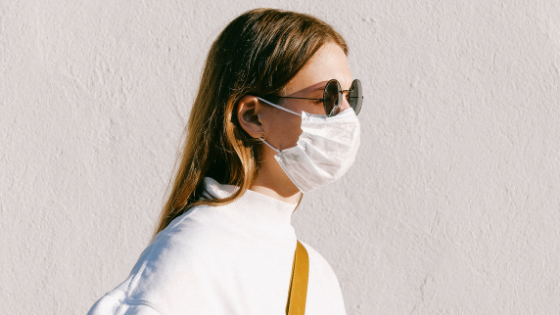
"Maskne": mask acne
Share
In our blog we have already mentioned the concept of Maskne, but now let's see what it is in detail.
Following the spread of the global CoViD-19 pandemic, for almost a year now we have been wearing the mask every day to protect ourselves and limit the exposure to the virus.

During the pandemic, dermatologists reported an increase in cases of mechanical acne and mechanical folicitis due to the fact that the mask promotes an increase inhumidity in the the environment between the fabric and the skin and traps a series of harmful substances such as sweat, sebum and dirt which remain in contact with our skin for a long time. This phenomenon, added to the fact that during the day we move the mask several times causing 'friction between the fabric and the skin, leads to the development of a'
Mechanical acne is distinguishable from the common acne vulgaris because in addition to the common imperfections it includes symptoms such as itching, stinging and burning sensations on the face
The increase in cases of dermatosis due to the mask is so evident that the popular term of Maskne has been coined: acne due to prolonged use of mask, the hashtag #maskne is trending on Instagram with more than 22. 000 posts.

The mask exacerbates this situation especially on sensitive or acne-prone skin, where the skin already spontaneously tends to overproduce sebum and skin fats which increase the incidence za of inflammatory phenomena with open comedones (blackheads) or closed (pimples) and, in the most serious cases, papules, pustules and nodules.
HOW TO TREAT IT
The best treatment would be the removal of the mechanical cause, i.e. the mask, but this means endangering oneself and above all others and therefore would imply'exposure at a far worse risk than acne.
However, there are some cosmetic guidelines that can be respected to alleviate this situation.
1. CLEANSING
Cleansing is a step that becomes even more important: the face should be cleansed morning and evening with a delicate cleanser with a pH that respects the skin's pH, between 5 and 5. 5. All detergents with aggressive surfactants should be absolutely avoided and it is advisable to use a double cleansing, first oily and then foaming.
The'use of detergents based on purifying molecules such as soap all'clay is excellent green by Bonel Botanicals which, thanks to its soothing and dermopurifying action, helps the skin fight 'acne.

2. SERUM AND CREAM
The best thing is to use a water-based serum with a high percentage of molecules with anti-acne activity such as la Burdock, Zinc PCA, niacinamide, bakuchiol (a vegetable substitute for retinol), this allows rapid penetration of the active ingredients into the skin layers.
Subsequently, it is advisable to proceed with the application of a moisturizing cream at regular intervals, which is essential to reduce the friction from rubbing between the mask and the skin. In addition, moisturizer helps decrease TEWL (the loss of water from the underlying layers of the skin).
'use of a sunscreen, also d' winter, if you are a lethargic beauty you can use moisturizers that already contain sunscreen. There are studies that have shown that moisturisers containing SPF30 reduce TEWL compared to moisturizers without a filter.
3. EXFOLIATION
Once a week you can proceed with a chemical exfoliation through beta or alpha hydroxyacids or substances keratolytic such as retinol. I recommend evening use of these substances in order not to be exposed to the sun in the following hours.
Another advice is not to use make-up in the affected areas such as foundation, face powder or similar asas it can also trap sweat
![]()

Dr. Federica D'Incà - COSMAST Master in Cosmetic Science and Technology
"Every woman has the right to be beautiful" - Elizabeth Arden
